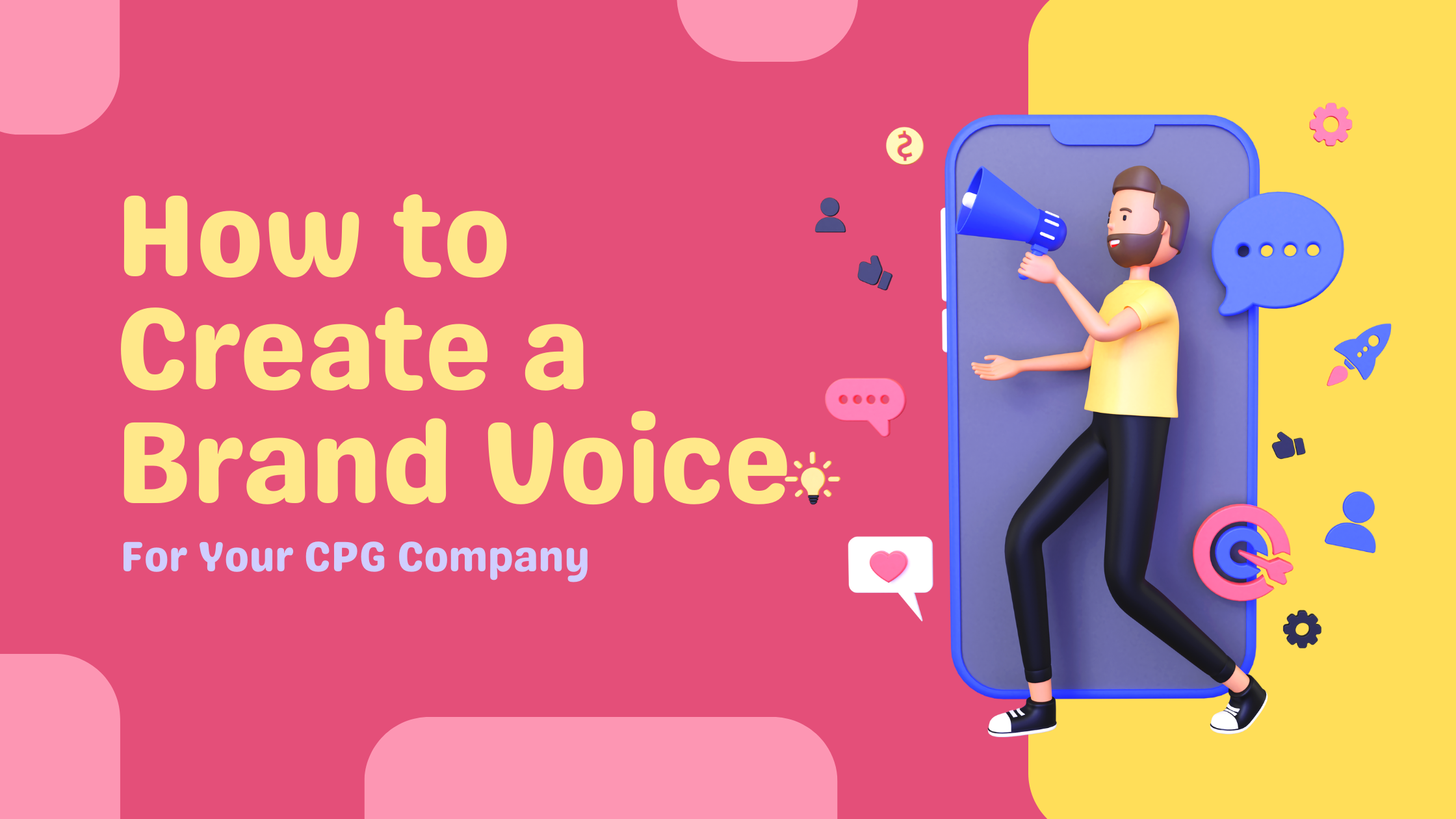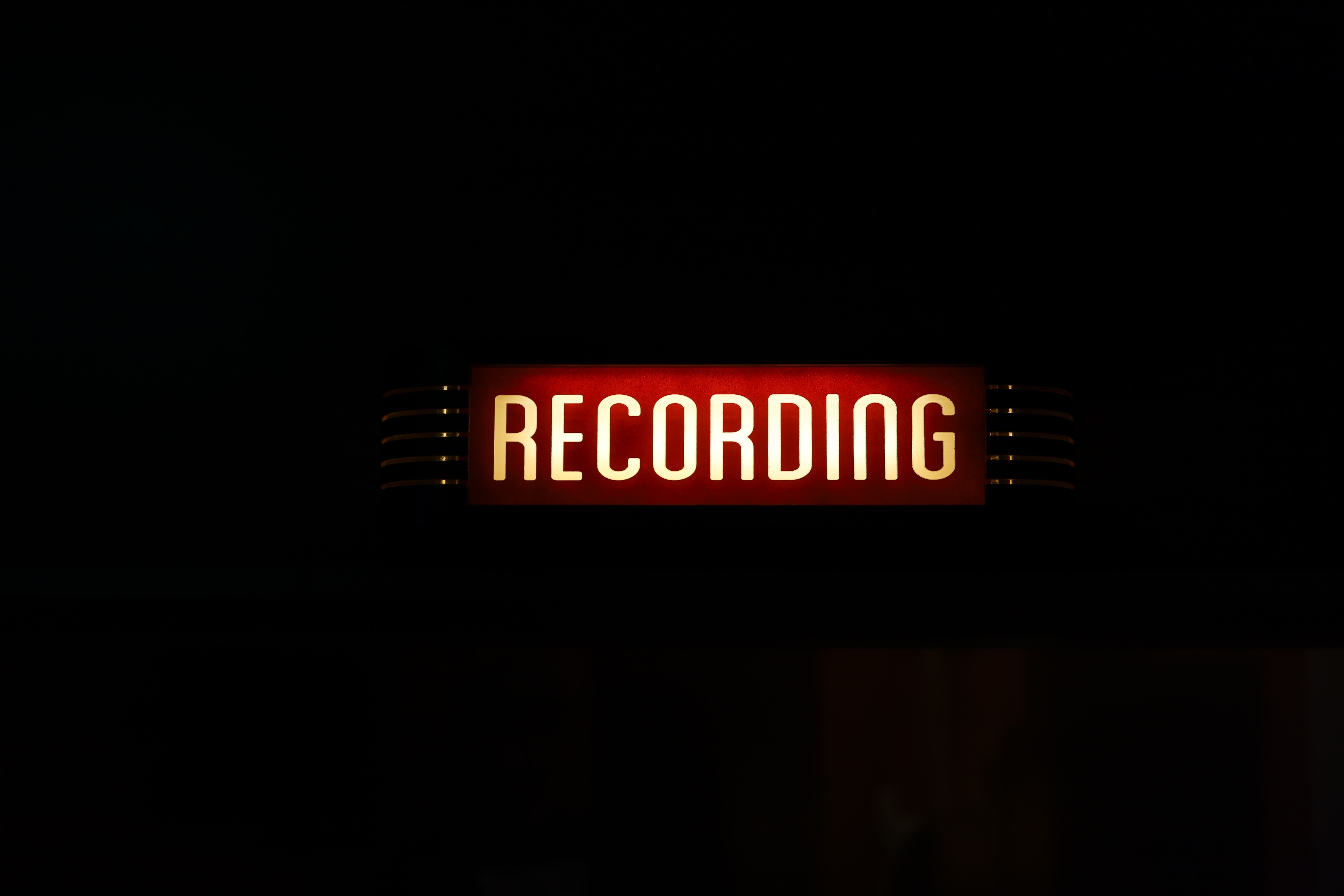How to Create a Brand Voice for your CPG

Marketing strategies for CPG brands have evolved from ‘push’ tactics to ‘pull’ in recent years.
Back in the day, you could almost say they had it a bit easier. Brands would simply announce their new products, tell the world about them and what makes them different, then wait for the customers to come to them — if only it were still that easy!
There weren’t so many brands around, and they were typically easier to find, with far fewer products to choose from.
Nowadays, these tactics simply wouldn’t be enough for a CPG brand to gain a significant share of the market. Rather than making a general announcement about new products and then sitting back and waiting for the sales to roll in, brands need to reach out and grab their customers, segment by segment.
One thing that has been pivotal to this shift in marketing behavior has been social media. In fact, over 80% of consumers have said that social media significantly impacts their buying decisions, making it a crucial aspect of a brand’s marketing strategy.
With the rise of social media and around 4.6 billion social media users globally, brands have had no choice but to adapt and find new ways to interact with their customers.
Even once you think you have it figured out, social media platforms themselves are always changing. Each platform — whether it’s Instagram, TikTok, YouTube, Twitter, Facebook, or another — has its own culture and style of communication. In order to be successful, you have to understand how users engage with each platform.
Though content styles and marketing teams may change, there is one aspect that must remain consistent across all forms of social media — the brand voice.

Brand voice is a tricky one to nail, which is why a good brand voice is what really leads the most successful CPGs to become household names, leaving the rest behind.
Have no fear, this article will help you to understand exactly what a brand voice is, why it’s so important for your CPG, and how to develop one of your own.
What is brand voice?
A brand voice is essentially a brand’s personality, helping to make one brand distinct from another.
Think about some of your favorite brands and try to imagine them as a person with a personality. How would you describe them? How would they talk to you and interact with you? That’s their brand voice.
Here are some examples of brands with unique brand voices, or ‘personalities’:
Dove
Dove is a great example of brand voice. When you think of Dove, you don’t only think of moisturizers and soaps. You think of how they’re always sending out messages of female strength and empowerment, uplifting their customers by inspiring self-love with a warm air of comfort and kindness.
Nike
Another example to help you understand brand voice would be Nike. Again, it’s not just about trainers or apparel. Their brand consistently sends out messages of confidence and motivation, encouraging their customers to ‘Just Do It!’
Their communication and messaging are always very clear, simple, and to the point.
Tiffany
Here’s an example of a brand that positions itself as premium through the use of brand voice. Tiffany is a luxury jewelry brand that’s been established for almost two centuries and has never wavered in its reputation for opulence and finery. They can owe that to the strength of their brand voice, which is always elegant, witty, and concise.
Wendy’s
Plenty of brands have used the growth of social media as an opportunity to play around with their brand voice and establish themselves as ‘one of us’ rather than an obscure and unrelatable brand. Wendy’s does a great job of promoting itself without making it feel too salesy.
Their brand voice is fun, humorous, casual, and clever, and they’ll never be afraid to take a cheeky jab at big competitors like Mcdonald's.
 Why is brand voice important for CPGs?
Why is brand voice important for CPGs?
While a great brand voice is what makes CPGs stand out, it also makes them more memorable, likable, and relatable.
Developing a brand voice helps your customers to build an emotional connection with your brand — something that money can’t buy.
Two brands could be almost identical, with similar values and product lines, but if one brand’s voice resonates more than the other, then that's where customers’ loyalty will lie. As a result, the brand with a stronger brand voice gets the edge over its competitor, as consumers are more likely to purchase its products.
You could invest hundreds, thousands, perhaps even millions of dollars into advertising your brand, but if it lacks a truly authentic brand voice, a lot of that money will go to waste.
A brand voice that resonates with your customers will continue to sell your products even when you’re not selling. By making your customers laugh, smile, feel empowered or uplifted, or drive any sort of positive emotion, they’ll seek out your products without you even having to promote them.
Why is that, you ask? It’s the feeling of belonging to something bigger than yourself. A consumer would much rather walk around with a can of Coca-Cola in their hands than an unbranded cola because of the community that’s formed around Coca-Cola and what it represents.
In the same way that fans of musicians buy merch to support and represent their fandom, consumers want to do the same with products for brands with excellent brand voices.
Hopefully, by now, you’re familiar with what brand voice is and why it’s critical in the digital age of social media marketing. Now let’s look into how your CPG can develop one of its own.

How you can create a strong brand voice for your CPG
While the concept of a brand voice can seem fairly elusive, especially if you’re just starting out, we’ve drawn up some clear, actionable steps that make developing a brand voice simple.
Gather and analyze your top-performing content
Pull out the content that you’ve shared on your social media — this could be videos, photos, blogs, graphics, and more. Now it’s time to take a closer look. What kinds of messages are they sending out?
Make a note under each piece of content with three descriptive words on how they make you feel.
Choose three words that describe your brand
Cast your eye across all of the descriptive words that you wrote down. Which ones were the most common? Write down the top three.
As of now, these top three descriptors are probably how your customers are perceiving your brand voice. If you want these words to describe your brand voice, then keep it up! If not, you’ll need to look into how you can make a change. Write down the three words that you instead want your brand to be known for.
Create your do’s and don'ts
As your brand grows, you’ll bring new people into the team who will all be writing in your brand voice. At this point, it’s really important that everyone can nail your unique voice to keep the messaging clear and consistent, so you don’t want to leave any room for interpretation.
For example, let’s say you’ve noted ‘funny’ as one of your brand voice descriptors. The term ‘funny’ could mean different things to different people. Some prefer dark humor or cuttingly sharp sarcasm, others like a bit of cheesy comedy. This is where your do’s and don’ts come into play. Here’s an example:
|
Brand voice |
Do’s |
Don’ts |
|
Funny |
|
|
Imagine that your brand is a celebrity or a fictional character
To help you to create consistent content that aligns with your brand voice, it’s helpful to imagine your brand voice as a celebrity or a fictional character.
For instance, if you wanted your brand to be down-to-earth, witty, and charming, then imagining all of your communications spoken by Ryan Reynolds might help.
Alternatively, if you wanted your brand voice to be warm, empathetic, and inspiring, then developing your content to sound like Oprah Winfrey could help the words to flow.
Revisit your brand voice as your brand evolves
As your brand and company grow, so should your brand voice. It doesn’t always have to change, but it should be able to adapt. Take TikTok, for example. Even the most serious brands seem to be able to let their hair down on this side of social media without compromising the strength of their brand voice.
Revisit point one every so often, whether that’s once a quarter or once a year. See whether any pieces of content performed well that added a new twist to your brand voice and decide whether it’s worth permanently integrating.
Head this way for even more valuable brand-building resources
As the leading distributor for good-for-you, good-for-the-planet, and alternative CPGs, we really know our stuff!
To tap into our knowledge of the CPG market and learn how to grow a successful brand both online and in your local region, head to the Buffalo Market blog.
Looking for distribution for your food or beverage brand? Buffalo Market offers the fastest, most transparent, tech-forward distribution in the industry. Contact one of our experts to learn more!





